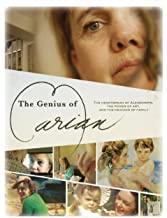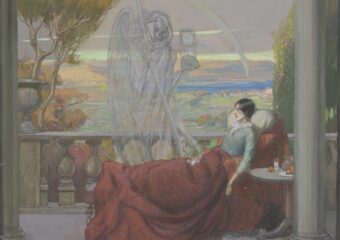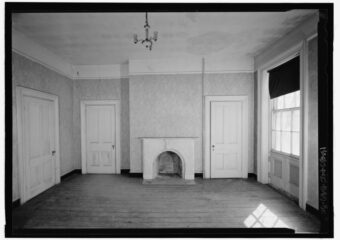Directors: Banker White and Anna Fitch
Producers: Mirabel Pictures
Release: 2013
Running time: 86 minutes
According to the Art:
The filmmaker follows the experience his mother has with Alzheimer’s disease over the course of about three years. Included are interviews with his mother, father, and siblings, as well as some of his mother’s longtime friends. The filmmaker splices in family movies spanning three generations revealing how the trajectory of his mother’s life changes as a result of her dementia, and shows personality traits that survived it. A more distant view of the film captures the dementia experience for a devoted, affluent, white, American family.
Synopsis:
Pamela Steele White was diagnosed with early onset Alzheimer’s disease at the age of sixty-one. A year later, in 2009, as her disease progression was evident, her son Banker, a documentary filmmaker, turned his camera on, and he kept it on until the autumn of 2012. His mother lived another four years.
The film begins showing the cruelest of ironies at work. Pam looks up at the camera, introduces herself, and says she’s working on a project she calls, “The Genius of Marian.” Marian is her late mother, who was an accomplished painter. She had Alzheimer’s disease before she died in 2001. Pam’s purpose with her project was to keep her mother alive “by at least not forgetting who she was.” Alas, she confesses she hadn’t been working on the project because she had forgot about it until just recently.
The film covers Pam’s plight over the next three years in various settings that show her mental and physical capabilities at the time. She answers questions family members and her doctor pose; we see her on family outings, and at moments when she’s captured alone lost in her thoughts, and lost in her house. We mostly see her struggle with memories and words, and with physical coordination (e.g., putting on a jacket). Some conversations reveal that Pam exhibited aggression and agitation, but we never see any of these episodes, only some nonviolent defiance on occasion.
Family members are also a focus, mostly in the form of interviews. Pam’s husband of forty years, Ed, is interviewed several times throughout the span of the film. As we see Pam’s capabilities diminish, we see Ed’s burden compound and his responses gather pathos. Pam’s only daughter and her younger son are interviewed and shown with their mother to a lesser degree. Some friends of many years are interviewed once or twice to round out the perspectives on Pam’s course over the time of the filming. The film is augmented with family movies capturing scenes of Pam and her brother with their parents, of Pam and Ed with their children, and of Pam and Ed with their children’s children. These scenes are often spliced into the documentary footage to show similar outings at similar locations across the three generations.
Analysis:
Pam’s descent into dementia is devastating to this family, the members of which can all be seen supporting and mourning her at the same time. We can see the degree and support Ed provides Pam, and get to hear what he’s thinking and fearing, what frustrates and angers him, and what surprises and delights him. We see him yield to external help with Pam, but only because he’s worried he can’t help her as well as professionals. In him, in this situation, we see an exemplar of the marriage vow “to love in sickness and in health.” Clear also in this view is the worry his children have for him in addition to their mother. We can see them participate in helping with their mother, which they could have been easily left to hired help.
The time span the film is sufficient to see a discernible trajectory of Pam’s condition. Early on we can see how Pam is aware of her dementia, and aware enough to admit to “memory issues,” but deny the Alzheimer’s diagnosis she has been given. By the end of the film, she needs much more help physically and she’s confused about her confusion. The family movies extend the film’s trajectory such that we can see how Pam’s dementia has changed or not changed her. Of particular note from the home movies, we see that from the time Pam was a little child and through the time of her advanced dementia, she had a jaunty demeanor, a happy disposition, a quick smile, and a ready laugh. The expanded trajectory the home movies shows how in some cases, the best of ourselves can survive the ravages of dementia.
Alzheimer’s disease is indiscriminate. In the various ways people may be grouped or classified, the disease neither singles them out nor spares any of them. This means the Alzheimer’s experience can be different for many people based on groups or classifications they may select for themselves or others may assign them to. In the case of this documentary, we are allowed to consider the Alzheimer’s disease as experienced within an affluent, white, American family. As such, what we can see is an experience relatively free from issues of time, money, knowledge, health care access, support service availability, and mobility. This particular scenario offers some views of Alzheimer’s disease that these types of issues can obscure, thus revealing needs people with Alzheimer’s may have that can go unnoticed.
Also:
Recognition:
- Camden International Film Festival – Harrell award for best documentary feature, 2013
- Washington West Film Festival – Jury award for best feature documentary, 2013
- Heartland Film Festival – Winner, documentary feature, 2013
- Woods Hole Film Festival – Audience award for documentary feature personal, 2013
- F&A 2014 Rosalinde Gilbert Innovations in Alzheimer’s Disease Caregiving Legacy Award
More information about the film and related activities can be found here.
A version of this review is posted at the NYU Literature, Arts and Medicine Database.



